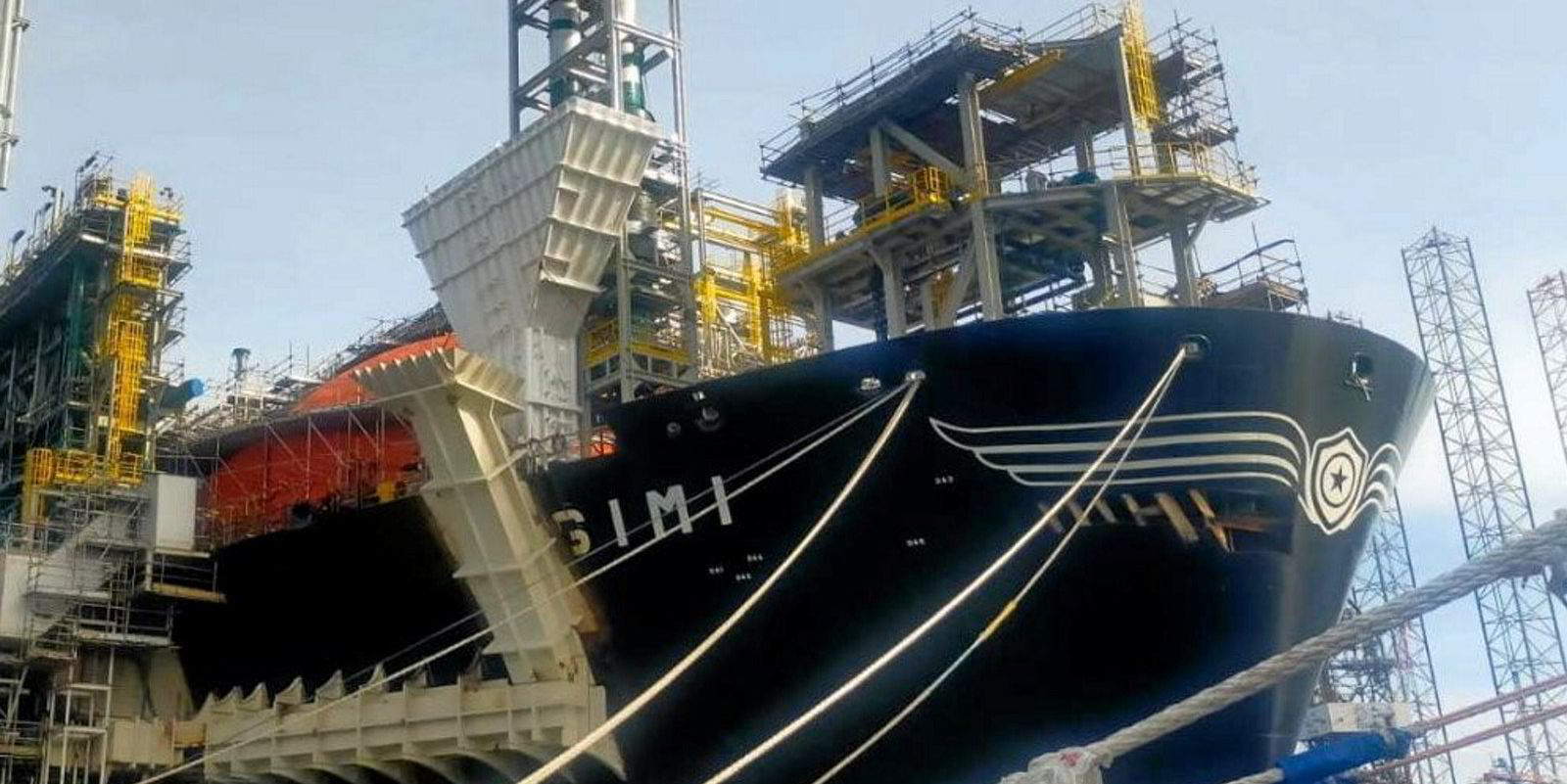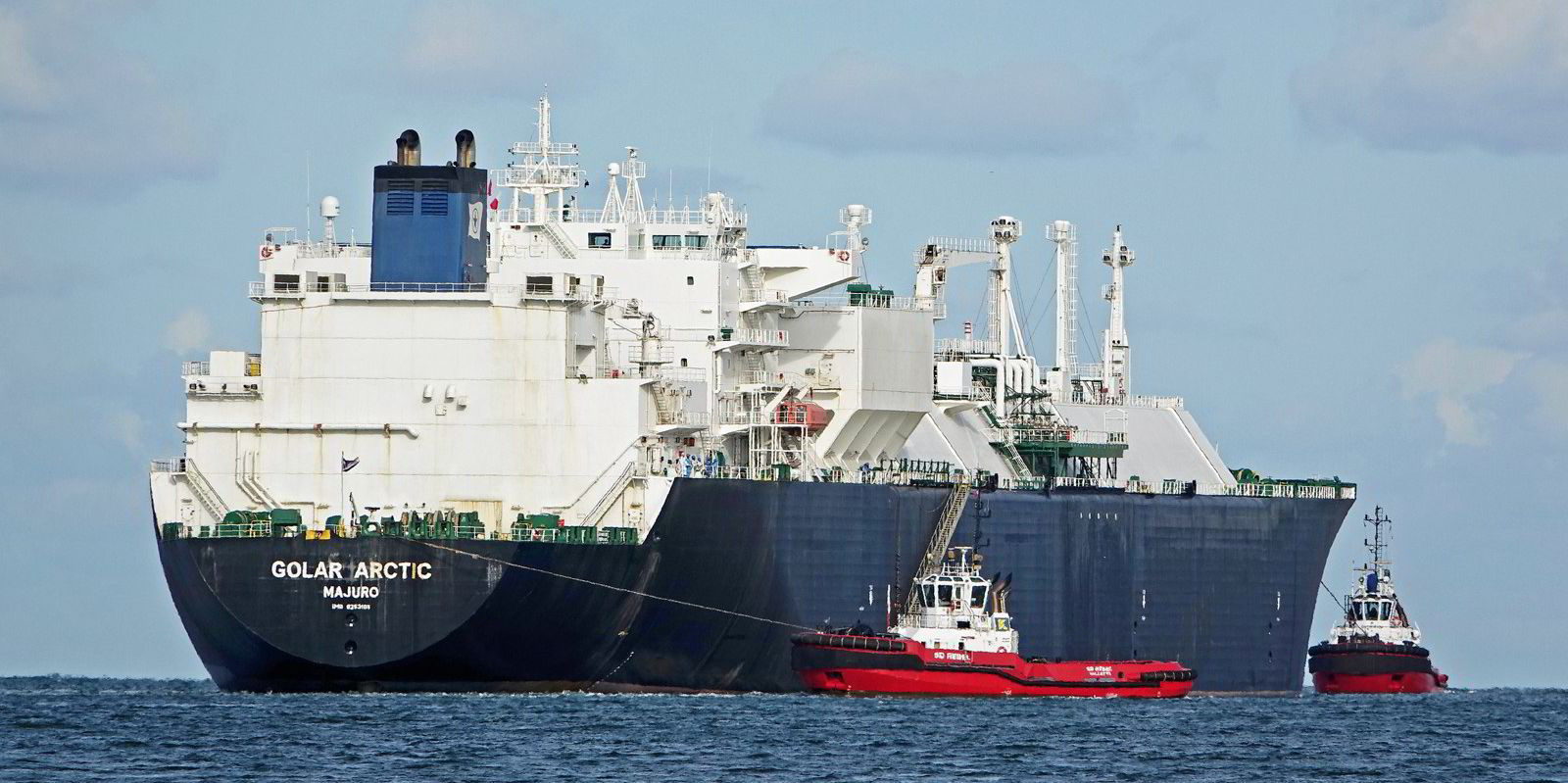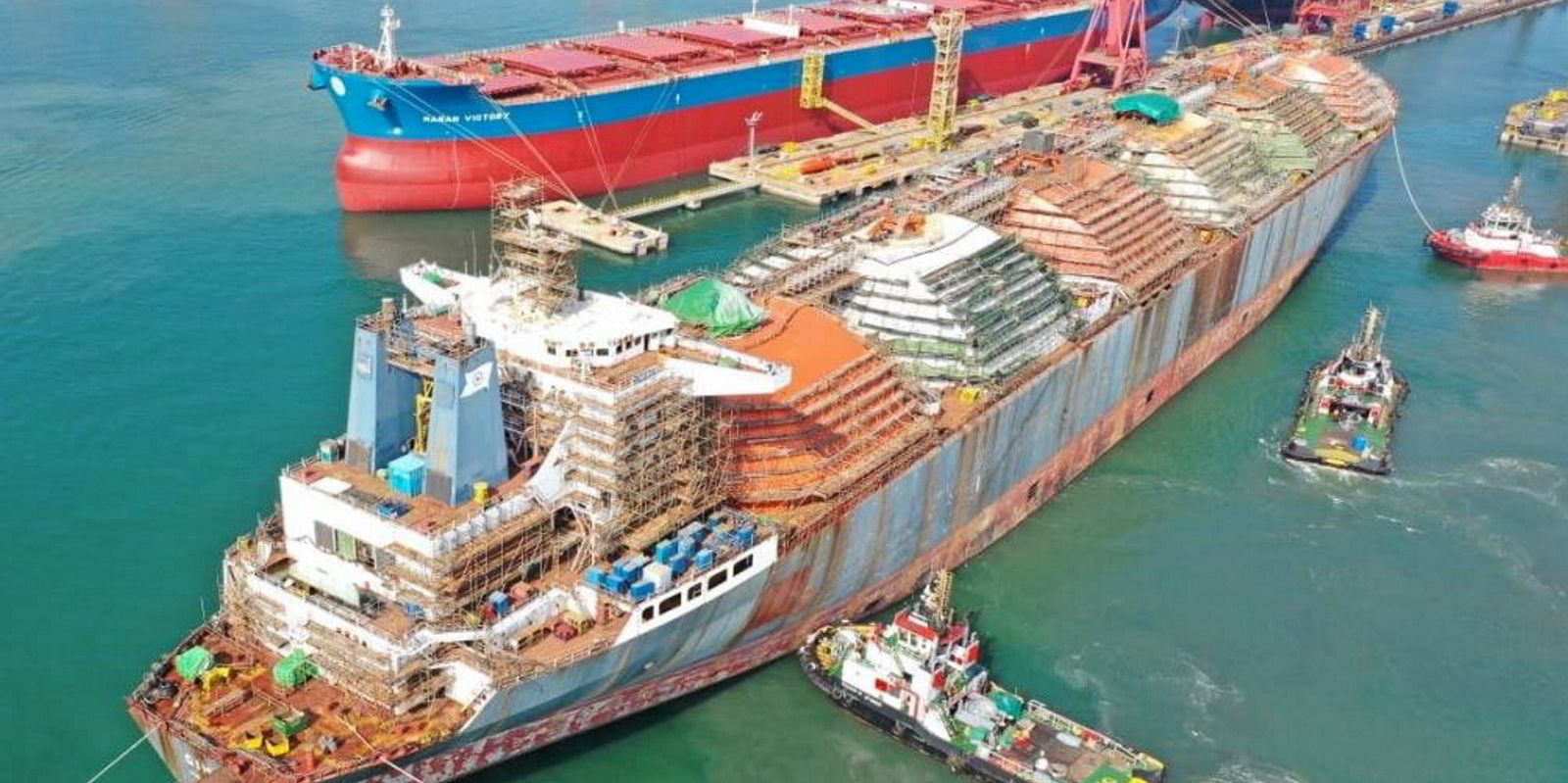Newly refocused Golar LNG has been inspecting Moss-type LNG carriers in its search for a conversion candidate for its next planned floating LNG (FLNG) production unit.
Golar chief executive Karl Staubo told analysts on a results call that the company is discussing “if and when” it will acquire a ship. He said the company has the option to use its existing vessel, the 126,000-cbm Gandria (built 1977) and is not 100% dependent on buying a ship.
But he said the Golar would like to buy a vessel with a higher storage capacity.
Today Golar announced it has ordered long-lead items for one of its $300m Mark II LNG carrier-to- 3.50mtpa FLNG unit conversions.
Golar gave fresh colour on the conversion of the LNG carrier Gimi into an FLNG unit that will serve energy major BP’s Greater Tortue Ahmeyim for Mauritania and Senegal.
Staubo said it has engaged its pre-operations and will have a maritime crew of about 120 persons mobilised and onboard the vessel by the year-end.
He said there is currently a workforce of some 4,600 people working round the clock on the 2.2 million tonnes per annum floater.
The unit is 90% complete and on schedule to leave Keppel Shipyard in the first half of 2023.
He said the company expects to start booking commissioning revenues in connection with the floater in the second half of 2023.
Asked about increasing production on its existing FLNG unit, Hilli Episeyo, off Cameroon, Staubo said the unit is now producting 1.4 mtpa.
Staubo clarified that the Hilli’s offtaker Gazprom Marketing & Trading has been nationalised by Germany and become SEFE — Securing Energy for Europe.
He said it would now be “in everyone’s interests” — Golar, operator Perenco and SEFE — to increase production but the constraints are the size of the existing reserves and the gas flow and upstream part which is under operator Perenco’s control.
The chief said Golar is the only company offering FLNG as a service. “We see limited competition from credible competitors,” he said.
The CEO reiterated that Golar’s guidance on the capital expenditure for its FLNG units is between $500 and $600 per tonne which he said compares favourably to both other offshore and land-based liquefaction projects.
He said just 26 mpta of new liquefaction has been greenlighted to date in 2022 but Golar is expecting a significant uptick in this for next year.
Staubo said Golar continues to focus on Africa for FLNG where the company can access source gas at $1 to $2 per MMBtu and the shipping distance is close to likely end-users.
Answering question, Staubo said the company — which raised $430m this month from selling stock in Cool Co and New Fortress Energy — does not need to sell further shares to fund its next-up FLNG unit.
Golar is currently sitting on a further $1.4bn worth of shares held in CoolCo, New Fortress and Avenir LNG.
Staubo said Golar has committed to invest up to $10m in new start-up Macaw Energies which is focused on building small-scale liquefaction to monetise land-based stranded gas and bio-gas projects.
“We are also opportunistically considering strategic partnerships or M&A throughout the LNG value chain.”







